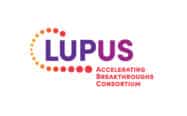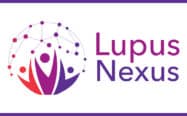December 18, 2019
The Lupus Research Alliance (LRA) welcomes additional positive results published today in the New England Journal of Medicine online edition from AstraZeneca’s Phase 3 TULIP-2 trial studying the investigational biologic anifrolumab as a treatment for systemic lupus erythematosus (SLE or lupus). The new study provides further details showing that anifrolumab, which targets type I interferon, met its primary endpoint to significantly lessen disease activity. Of those treated with anifrolumab, 47.8 percent responded to treatment compared with 31.5 percent of those given a placebo.
Kenneth M. Farber, President and CEO of the Lupus Research Alliance commented, “We are finally seeing the light at the end of the tunnel with this and other Phase 3 trials delivering the promise of much-needed new therapies for people with lupus. The LRA is particularly proud to see decades of work by our funded scientists on understanding the type I interferon pathway lead to the development of anifrolumab as a potential new treatment.”
Anifrolumab an Outcome of Early Interferon Research
Anifrolumab works by disrupting a group of proteins produced by the immune system called type I interferons that promote inflammation. Research has shown that 30-50 percent of adults and most children with lupus have high interferon levels. The Lupus Research Alliance has played a key role in unraveling the role of interferon in lupus over the past two decades.
Principal investigator and author of the NEJM paper Professor Eric Morand of Monash University in Australia commented, “As an LRA-funded researcher I am both humbled and very proud to be involved in this landmark program, and so happy to see years of collective work on the IFN pathway by scientists all around the world formally validated in human SLE. It is a major validation of the scientific process and of translational research, as well as potentially a breakthrough new medicine for lupus. I hope the major learnings on trial endpoints from this program can help other programs advance towards approval.”
“The Lupus Research Alliance and its legacy organizations have sponsored nearly two dozen studies on type I interferons, including work that identified a unique combination of genes that is switched on in the blood of lupus patients,” Mr. Farber said. “The LRA is particularly proud to see decades of work by our funded scientists on understanding the type I interferon pathway lead to the development of anifrolumab as a potential new treatment.”
The Journal featured an accompanying editorial by long-time LRA Scientific Advisory Board member Dr. Jane Salmon, Hospital for Special Surgery and Weill Cornell Medicine, and LRA-funded investigator and reviewer Dr. Timothy Niewold, Colton Center for Autoimmunity, NYU School of Medicine.
Anifrolumab Shows Promise for Reducing Disease Activity and Flares
In TULIP-2, anifrolumab met its primary endpoint which is the most important result that is measured at the end of the study to see if the drug worked. Treatment with anifrolumab resulted in significant and meaningful reduction in disease activity in all organs with no new flares as measured by a standard tool called the British Isles Lupus Assessment Group (BILAG)-based Composite Lupus Assessment (BICLA). Of those treated with anifrolumab, 47.8% of patients responded to treatment compared with 31.5 who received placebo. The rate of flares was also somewhat lower among those treated with anifrolumab.
The study also succeeded in meeting key secondary endpoints which measure other effects of the drug: 51.5% of those treated with anifrolumab reduced doses of the steroid prednisone versus 30.2% taking placebo. According to standard measurement tool CLASI, 49% of patients showed improvement in severity and degree of skin damage compared with 25.0% of those on placebo.
No new information on safety was seen. Among patients on anifrolumab, 7.2% developed herpes zoster versus 1.1 percent of those given placebo. Less adverse events occurred in the anifrolumab group (8.3%) than the 17.0% of people in the placebo group. Also, more people given placebo discontinued the trial (7.1%) than the 2.8% on anifrolumab. One person in the anifrolumab group died from pneumonia.
Click here for full background on Type I Interferon in lupus.






